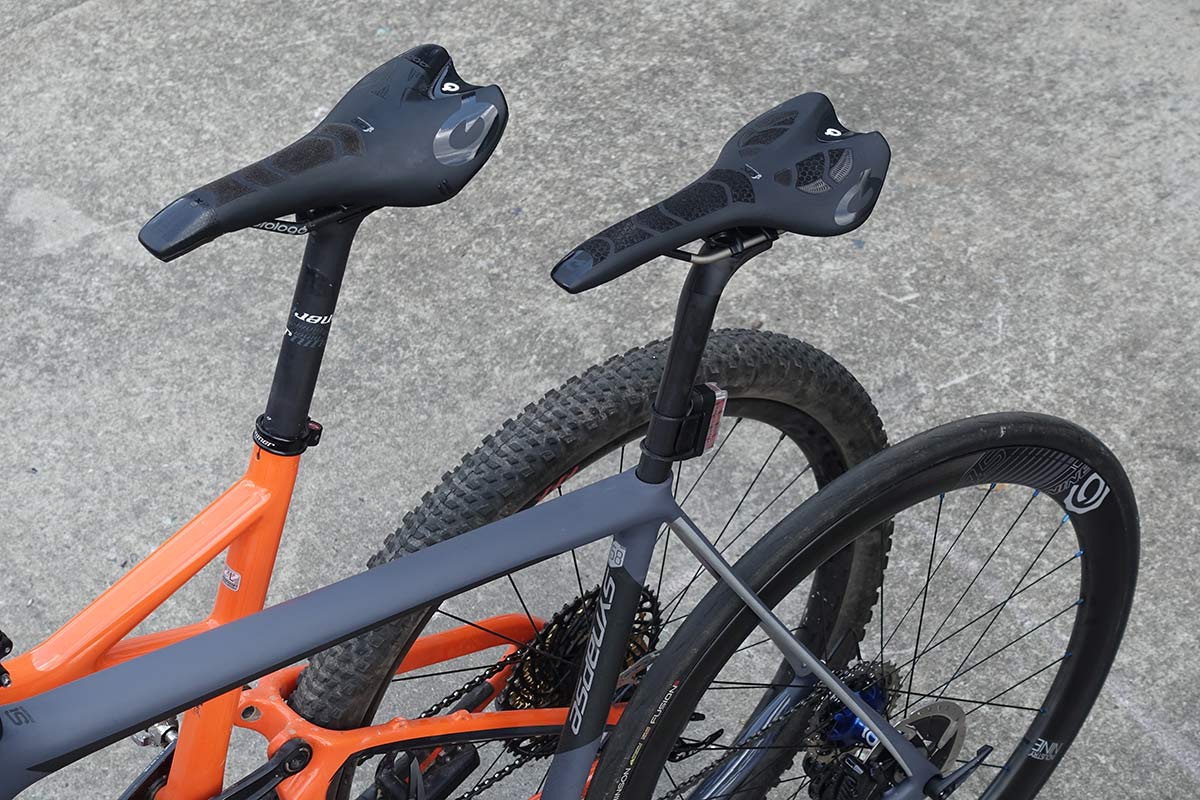Ever wonder what all of the different materials, shapes, sizes and features really do on a saddle? We partnered with Prologo to explain all the features in this five-part video series.
For part four, we show you the differences between road and mountain bike saddles. And there are a lot of differences, from shapes and widths, to shell thickness and the amount and type of foam used. And more. It’s all here in this video, plus a look at the CPC tech that’s exclusive to Prologo (and even that is different between road and mountain).
For roadies, having a little kick at the tail is a good thing. But MTB riders may want a flatter saddle, particularly if you’re using a dropper post, as that makes it easier to slide off the back of the saddle…and, just as importantly, get back on it, too! Foams can vary between road and mountain because the types and frequencies of vibrations they need to tame are different. This is because the tires are different and create their own frequencies, and the terrain is different, too. Those are a couple of the key things, check the video for the full story!
Check out the other videos here:
- Part One: Do I really need carbon rails?
- Part Two: What about a carbon shell?
- Part Three: What do I need to know about the foam?
- Part Four: Road vs MTB saddles
- Part Five: What’s the best saddle shape for me?
Huge thanks to Prologo for supporting this series. Prologo makes a massive range of saddles, with different shapes, widths, curvatures and features to fit every rider and every budget. Check them out next time you’re looking to upgrade. And be sure to subscribe to Bikerumor’s YouTube channel so you won’t miss a single episode!
